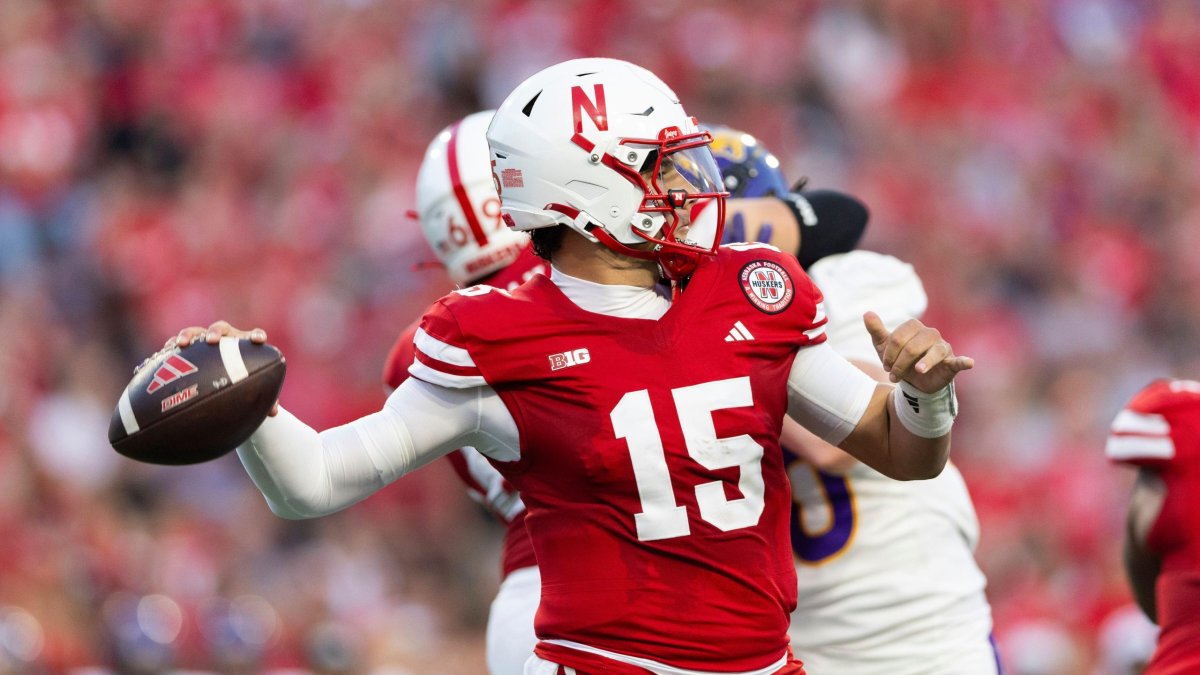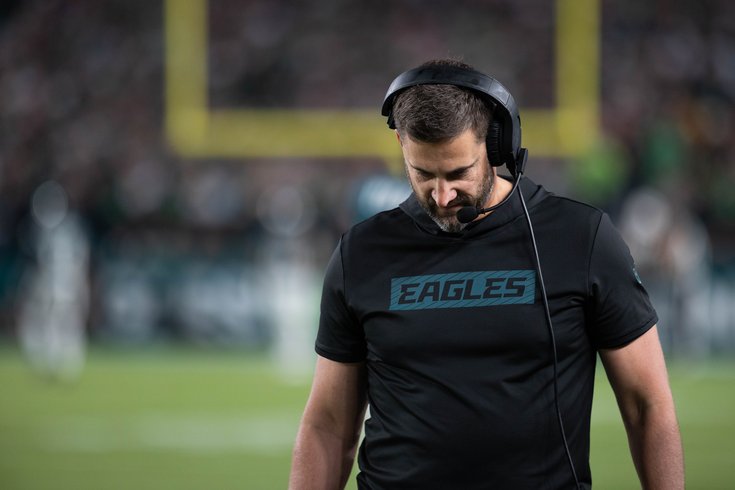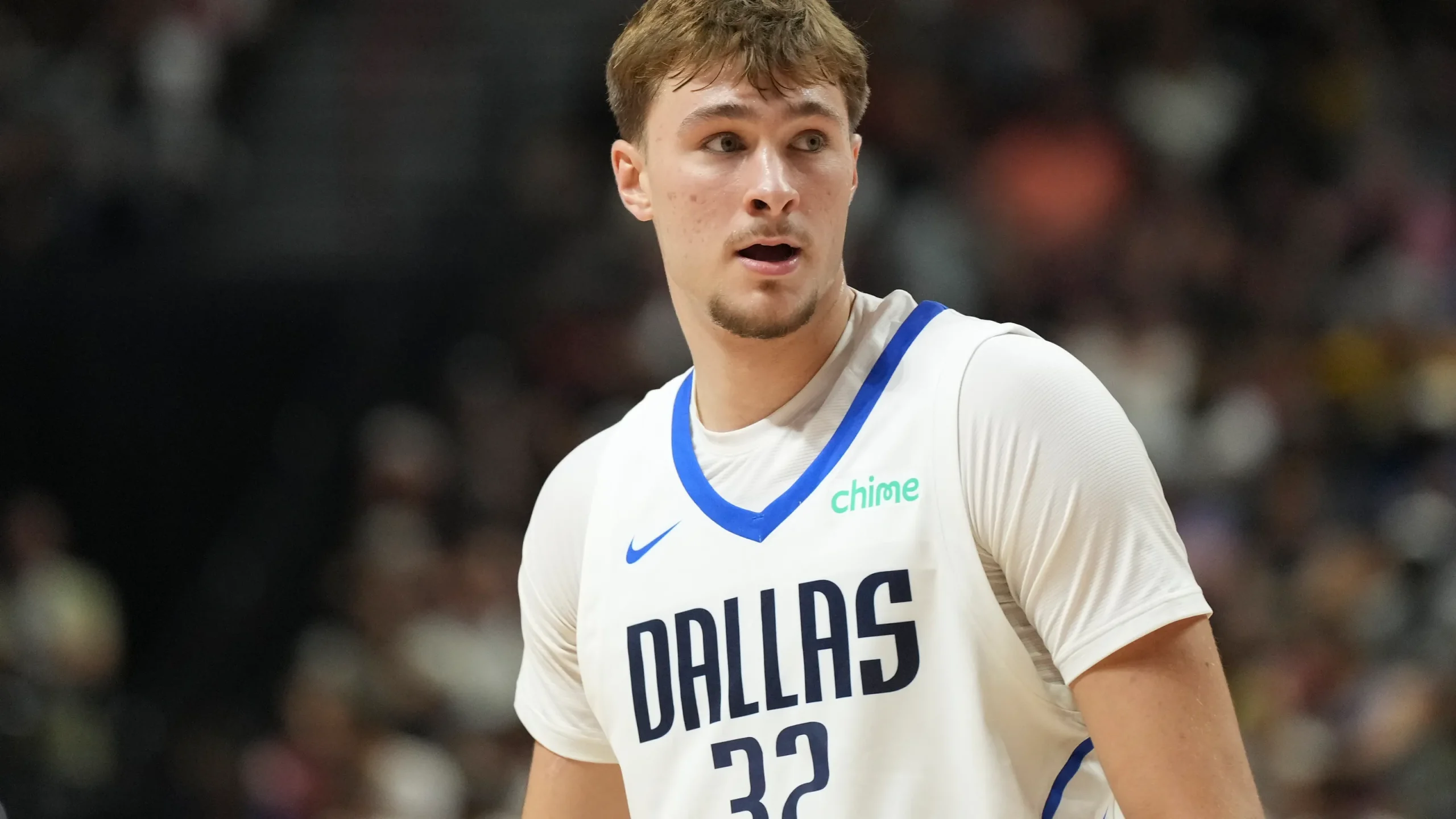Week 3 was unspectacular by college football’s standards. Only two ranked teams lost, and the losses happened against other higher-ranked teams. Week 4 promises to be far more exciting with four games between top-25 teams, the most of any slate so far this season.
No. 24 Illinois Fighting Illini at No. 22 Nebraska Cornhuskers (Friday, 8 PM EST on FOX)
Setup: This Friday marks the 22nd meeting between Illinois and Nebraska, but it’s not just any regular game—it’s a historic encounter, being the first ranked matchup between the two programs in nearly four decades, with the last occurrence in 1985. Both the Fighting Illini and the Cornhuskers come into the game ranked in the top 25, a rare scenario that adds an extra layer of anticipation.
Illinois finds itself ranked for the first time in two years, boasting a 3-0 start for the first time since 2011. Meanwhile, Nebraska has cracked the top 25 for the first time in five years and also enjoys a 3-0 start, its first since 2016. As both teams face off, the stakes are high: the victor will continue its upward trajectory, while the loser might see their promising start cooled down abruptly.
Illinois on Offense: Heading into this season, there was a hopeful buzz around Illinois, particularly with expectations that the offensive line would bounce back from a lackluster 2023 season. Last year, the line was adequate in run blocking but significantly struggled in pass protection, which disrupted the entire offensive operation and led to an injury for quarterback Luke Altmyer.
This year, despite the interior of the line remaining the same, Illinois had to replace both starting offensive tackles who graduated. They addressed these gaps effectively through the transfer portal. J.C. Davis, a left tackle from New Mexico who was third in overall grade among offensive tackles last season, and Melvin Priestly, a right tackle from Grambling State, have dramatically transformed the line’s capabilities. Davis has been solid, earning a 71.4 overall grade and allowing just two pressures in three games. Meanwhile, Priestly has excelled, ranking sixth nationally in overall grade and fifth in run blocking.
These additions have significantly bolstered the Fighting Illini’s offensive balance, allowing them to average five yards per carry in the run game. The enhanced protection has also benefited quarterback Luke Altmyer, who performs markedly better when not under pressure. As they prepare to face Nebraska’s formidable defensive front, led by Ty Robinson, the sustained success of these new tackles will be crucial for Illinois to continue their offensive effectiveness.
Nebraska on Offense: Dylan Raiola, the former five-star recruit, has made an impressive start to his collegiate career, leading all true freshmen with a 76.4 passing grade. His ability to execute any throw in the playbook combined with a mature approach to the game has helped him maintain a low turnover-worthy play rate of just 1.1%, ranking second among Big Ten quarterbacks—trailing only Dillon Gabriel.
As Raiola heads into his next challenge, he faces an Illinois defense that has been particularly effective at forcing mistakes from quarterbacks. This season, opposing quarterbacks have managed only a 46.5 passing grade against the Fighting Illini, who have induced nine turnover-worthy plays while allowing just one big-time throw. Notably, Jalon Daniels of Kansas, a top prospect for the 2025 NFL Draft, struggled significantly against this defense, marking his lowest performance since his freshman year in 2020.
Illinois predominantly uses Cover 1, challenging opponents to beat them in man-to-man matchups. With the Illini employing this strategy at one of the highest rates in the Power Four (55.5%), Raiola will need to navigate this aggressive defensive scheme carefully. So far, his performance against man coverage has been a weaker aspect of his game, with a passing grade of just 47.2 in those situations. This upcoming game will be a critical test of Raiola’s adaptability and growth as he confronts one of his most formidable defenses to date.
Prediction – Nebraska 27, Illinois 24
No. 11 USC Trojans at No. 18 Michigan Wolverines (3:30 PM EST on CBS)
Setup: This season, both USC and Michigan are navigating the challenging waters left by their first-round NFL draft pick quarterbacks, Caleb Williams and J.J. McCarthy, respectively, each selected within the top 10 picks of the 2024 NFL Draft. The approaches and results of these programs, however, have diverged significantly.
For USC under head coach Lincoln Riley, the transition appears seamless. Riley’s tenure, starting in 2017, boasts a remarkable record: every quarterback he has coached has been drafted into the NFL. This illustrious list includes three Heisman Trophy winners—Baker Mayfield, Kyler Murray, and Caleb Williams—and four who are currently starting quarterbacks in the NFL. Miller Moss, stepping in for Williams, has upheld this tradition impressively.
Michigan, on the other hand, is experiencing a rockier transition. The Wolverines’ new quarterback, Davis Warren, has struggled significantly, throwing six interceptions to date, a high tied for most in the Power Four. His performance led to a benching after earning a meager 58.3 passing grade against Arkansas State. His replacement, Alex Orji, possesses limited experience with just seven career passing attempts and is slated for his first career start in a high-stakes game against the Trojans.
This stark contrast underscores the varying challenges and strategies in collegiate quarterback development and adaptation post-draft, setting the stage for an intriguing matchup.
Michigan on Offense: Through the first three games of the season, Michigan’s passing game has struggled to establish itself, prompting a significant shift towards a more ground-oriented offense. This shift was evident last week when the Wolverines amassed 309 rushing yards against Arkansas State. With the recent quarterback change to Alex Orji, it’s expected that Michigan will further emphasize the run game, relying on their ability to control the clock and the line of scrimmage.
On the other side, USC’s defense is preparing for its sternest challenge yet under Defensive Coordinator D’Anton Lynn. Last season, the Trojans were ranked 60th in the Power Five for EPA allowed per designed rush, demonstrating moderate vulnerability. However, this season shows signs of improvement; they’ve risen to 35th in the same category and recently secured a commendable 77.6 run-defense grade against LSU, known for its strong offensive line.
The Trojans don’t necessarily boast standout stars in their front seven, but their depth has been a crucial factor. They have a capable ensemble of players who collectively achieve solid defensive performances. This season, expect USC to frequently deploy a five-man front—a strategy that Lynn utilized effectively during his tenure at UCLA—to counter Michigan’s anticipated run-heavy approach. This matchup between Michigan’s revitalized run game and USC’s bolstered defensive line will be critical in determining the outcome of their encounter.
USC on Offense: Michigan boasts one of the most formidable defensive lines in college football, with Mason Graham and Kenneth Grant anchoring the interior. Graham, in particular, is recognized as a top prospect. This defensive prowess places the Wolverines among the elite, particularly in disrupting opposing offenses.
However, the effectiveness of Michigan’s defensive line against USC hinges critically on the performance of their secondary. USC’s quarterback, Miller Moss, operates with one of the fastest release times in the nation, averaging 2.21 seconds per throw. This rapid execution significantly reduces the window for defensive lines to pressure the quarterback, necessitating exceptionally tight coverage from the defensive backs.
USC’s offensive strategy under Lincoln Riley involves quick, precise throws, minimizing opportunities for defensive lines to disrupt plays. Consequently, Michigan’s secondary, despite the brilliance of cornerback Will Johnson, faces immense pressure to improve their overall coverage, which currently ranks 79th nationally with a grade of 73.4.
For Michigan to effectively leverage its defensive line strengths, their secondary must extend the duration of coverage, allowing time for Graham, Grant, and other pass rushers to penetrate USC’s offensive line. This matchup between Michigan’s need for improved pass coverage and USC’s quick-strike passing game will be crucial in determining the dynamics of the game.
Prediction – USC 31, Michigan 24
Georgia Tech Yellow Jackets at No. 19 Louisville Cardinals (3:30 PM EST on ESPN2)
Setup: Louisville entered our preseason rankings at No. 17, a spot higher than their absence from the AP Top-25 at the season’s start. They’ve since climbed in our rankings to 14th, notably outpacing their AP poll position by five spots. However, the true measure of Louisville’s strength this season is still up for debate, given the level of their initial competition.
The Cardinals’ early season victories came against teams with less challenging profiles; they defeated Austin Peay, an FCS school, and Jacksonville State, which has struggled to a 0-3 record with losses to Coastal Carolina and Eastern Michigan. These wins, while boosting confidence, haven’t provided a robust gauge of the team’s capabilities against top-tier competition.
This weekend, Louisville faces a much sterner test as they line up against Georgia Tech, marking their first encounter this season with a Power Four school. Georgia Tech, with a respectable 3-1 record and a recent ranking within the top-25, presents a significant step up in competition. This matchup will not only test Louisville’s mettle but also offer a clearer picture of whether their early-season performances are indicative of a genuinely competitive team in the higher echelons of college football.
Louisville on Offense: Louisville has faced considerable roster turnover, losing their starting quarterback, top two running backs, and leading receiver. Despite these changes, the team has adhered to a consistent offensive formula: a strong emphasis on the run game, supplemented by play action and deep passes downfield. This strategy has proved effective in their initial games, albeit against less formidable opponents, propelling Louisville to lead the nation with an impressive 92.4 rushing grade.
Georgia Tech, on the other hand, presents a new level of challenge. The Yellow Jackets have shown considerable improvement in their run defense, earning a top-20 grade in this area. However, vulnerabilities remain in their pass defense that Louisville could exploit. Over the past season, Georgia Tech has struggled particularly with deep passes, ranking 96th nationally in coverage grade against them, and their defense against play-action isn’t faring much better, standing 73rd.
Louisville’s quarterback, Tyler Shough, is well-positioned to test these weaknesses. With the fourth-highest play action rate and the 15th-best deep passing grade in the FBS, Shough’s style of play directly challenges Georgia Tech’s defensive shortcomings. Although the competition steps up significantly this week, the specific vulnerabilities in Georgia Tech’s secondary, especially at the safety position, could allow Shough and the Cardinals to continue their successful offensive execution.
Georgia Tech on Offense: Georgia Tech’s offensive strategy heavily relies on its potent option run game, spearheaded by quarterback Haynes King and running back Jamal Haynes. This season, the Yellow Jackets have executed their run-centric approach effectively, utilizing the run in 52% of their plays and achieving an impressive average of 5.6 yards per carry. The dual-threat capabilities of King, who not only excels in mobility but also holds a respectable 84.7 passing grade, add a complex layer for defenses, often necessitating more defenders in the box to counter the run while still respecting his ability to pass.
Last year’s matchup highlighted the challenges Louisville faced against this dynamic Georgia Tech offense. In a narrow 39-34 victory, Louisville struggled as Georgia Tech managed to generate significant yardage with 17 plays that went for at least 10 yards—the highest Louisville conceded in any game throughout the season. King’s versatility was particularly troublesome, as he amassed 366 total yards of offense, exploiting every opportunity the field offered.
While Louisville enters this game with one of the nation’s best run defenses, ranked fourth with a 91.8 grade, they have yet to face an offense in this season as versatile and challenging as Georgia Tech’s. This upcoming contest will not only test Louisville’s defensive improvements but also their ability to adapt and respond to an offense that can effectively blend the run with strategic passing. The outcome will hinge on Louisville’s ability to contain Georgia Tech’s multifaceted attack, which promises to be a significant indicator of their defensive prowess.
Prediction – Georgia Tech 34, Louisville 31
No. 12 Utah Utes at No. 14 Oklahoma State Cowboys (4 PM EST on FOX)
Setup: Utah and Oklahoma State are prominently positioned among the top contenders in the Big 12, with both teams ranked in the AP poll’s top-15, joined by Kansas State, which ranks between them. Currently, Utah is the betting favorite to win the conference with odds at (+250), making them a strong contender, while Oklahoma State follows closely with odds at (+475), according to DraftKings Sportsbook.
This upcoming game holds significant implications for both teams. The victor is poised to ascend as the Big 12’s highest-ranked team and solidify its status as the frontrunner for the conference title. Conversely, the loser will face a considerable hurdle, potentially derailing their championship aspirations in what is shaping up to be an exceptionally competitive season in the Power Four conference.
This matchup not only promises to be a pivotal moment in the Big 12’s season but also a critical juncture that could define the trajectory for both Utah and Oklahoma State’s campaigns, emphasizing the high stakes and intense competition expected in this crucial conference clash.
Oklahoma State on Offense: As Oklahoma State navigates a slow start from star running back Ollie Gordon II, the onus has shifted to quarterback Alan Bowman and his cadre of receivers to propel the Cowboys’ offense. With opponents focusing on stifling Oklahoma State’s run game, Bowman’s adeptness at the quick passing game has come to the forefront. He boasts one of the fastest release times in the FBS, ranking eighth this season, which has been a key factor in their offensive strategy. His ability to execute quick throws has led to eight of his nine touchdown passes being completed in under 2.5 seconds.
Bowman’s primary targets, De’Zhaun Stribling, Rashod Owens, and Brennan Presley, have been instrumental in this quick-strike offense. Their proficiency in rapidly developing routes complements Bowman’s quick release, making the passing game a crucial component of Oklahoma State’s offensive strategy.
However, this approach will be rigorously tested against Utah, known for its robust defensive play. The Utes feature a trio of talented cornerbacks—Zemaiah Vaughn, Elijah Davis, and Smith Snowden—who have excelled in coverage, particularly against quick passes. Utah’s defense ranks 12th in the Power Five for the lowest Expected Points Added (EPA) per pass on throws released under 2.5 seconds. Their strategic use of single-high coverage not only bolsters their ability to contain short passes but also enhances their run defense.
If Utah’s secondary manages to disrupt Oklahoma State’s quick passing game, the Cowboys may need to find new ways to ignite their offense, especially considering Gordon II’s current struggle to gain yards on the ground, averaging only 3.2 yards per carry. The game could expose Oklahoma State’s offensive depth and adaptability, as continuing a one-dimensional approach may limit their effectiveness against a well-rounded Utah defense. This matchup will not only test the Cowboys’ offensive strategy but also their ability to adjust in the face of tactical defensive pressure.
Utah on Offense: As Utah prepares for their upcoming game against Oklahoma State, all eyes are on quarterback Cameron Rising, who missed the last game due to a ring finger injury on his throwing hand. The return of Rising is critical for Utah, especially given the vulnerabilities in Oklahoma State’s pass defense.
The extent of Rising’s recovery is crucial, as his ability to perform effectively could dramatically influence the game’s dynamics. According to reports from team sources, including wide receiver Dorian Singer, Rising is set to play against Oklahoma State. However, the impact of his finger injury on his passing ability remains a question.
Oklahoma State’s defense presents a favorable matchup for a healthy Utah quarterback. The Cowboys have struggled in pass coverage this season, ranking as one of the poorest in the Power Four with a coverage grade of 60.6 and allowing an average of 7.6 yards per pass. These statistics highlight a significant opportunity for Utah’s offense, especially if Rising can maintain his usual level of play and exploit these defensive gaps.
If Rising is close to full fitness, his ability to execute Utah’s offensive playbook could be the key factor in unlocking Oklahoma State’s defense. Utah’s game plan will likely depend heavily on Rising’s performance, making his health and effectiveness pivotal in this high-stakes conference matchup.
Prediction – Utah 31, Oklahoma State 27
No. 6 Tennessee Volunteers at No. 15 Oklahoma Sooners (7:30 PM EST on ABC)
Setup: Oklahoma, despite boasting an undefeated record of 3-0, has encountered significant challenges on the offensive front as they prepare for their first SEC game against a formidable Tennessee team. The Sooners’ offensive unit has notably underperformed, recording the second-lowest offensive grade in the Power Four at 61.8, only surpassing UCLA. Their deficiencies span across receiving, run-blocking, and even in basic passing and rushing metrics, where they rank poorly compared to their Power Four peers.
Contrastingly, Tennessee has been exceptional, dominating opponents with an average victory margin of 63.7 points per game, highlighted by a commanding 41-point win against the then-ranked No. 24 NC State. The Volunteers’ defense has been particularly stingy, allowing just 13 points over three games and ranking among the top ten in the country.
As Oklahoma steps into the intense competitive environment of the SEC, the match against Tennessee will be a critical test of their offensive resolve and adaptability. This game will be a decisive indicator of whether Oklahoma can revitalize its offense against a Tennessee defense that has been both relentless and efficient. For Oklahoma to make a statement and quell concerns about their offensive capabilities, they will need to address their execution issues and find a way to effectively challenge Tennessee’s robust defense.
Oklahoma on Offense: Oklahoma’s offensive line, amid a season of transition and challenges, is confronting considerable hurdles. Tasked with replacing the entire line-up from 2023, the unit has grappled with injuries and inconsistent performances, resulting in the lowest grading among Power Five teams. This concern was underscored last week against Tulane, where only one of the Sooners’ five intended starters was in their projected position, highlighting the instability and adaptation challenges they face.
In stark contrast, Tennessee’s defensive line has emerged as a formidable force, achieving the eighth-best overall grade in the nation despite a somewhat slow start from standout player James Pearce Jr. The Volunteers have developed a notably deep bench, with players like Omari Thomas and Dominic Bailey enhancing their pass rush, and Tyre West and Joshua Josephs bolstering run defense. This depth and versatility provide Tennessee with the ability to rotate fresh, skilled players without diminishing their line’s effectiveness.
As these two units collide, the key battle will be in the trenches. Oklahoma’s ability to stabilize its offensive line and provide adequate protection and running lanes will be crucial against a Tennessee defense that is deep and talented. The Volunteers’ defensive strategy will likely focus on exploiting the evident vulnerabilities of Oklahoma’s front, potentially overwhelming them with pressure and disruptive plays. If James Pearce Jr. can elevate his performance to match his teammates, Tennessee’s defensive line could dominate the game, making it exceedingly difficult for Oklahoma to establish any offensive rhythm. This matchup will significantly impact the game’s dynamics and could dictate the pace and outcome of this critical SEC showdown.
Tennessee on Offense: Dylan Sampson has been a standout performer for Tennessee this season, with his impressive 7.9 yards per carry ranking fifth among all collegiate tailbacks. His agility and ability to break off big runs have been pivotal for the Volunteers’ offense. However, Sampson is set to face one of his toughest challenges yet against an Oklahoma defense that excels in shutting down the run. The Sooners boast a formidable run defense, currently holding the second-highest grade in the FBS at 92.5 and allowing a mere three yards per attempt. This matchup will be a critical test of Sampson’s abilities and Tennessee’s run game strategy.
Given the strength of Oklahoma’s run defense, the burden may shift to Tennessee’s redshirt freshman quarterback, Nico Iamaleava, to move the offense through the air. Despite a stellar start in Week 1, Iamaleava’s recent performances have been less consistent, as evidenced by his 56.0 passing grade over the last two games which included three turnover-worthy plays. To secure a road victory, Iamaleava will need to elevate his play and capitalize on every opportunity against an Oklahoma defense that has been tough on quarterbacks, yielding only a 58.4 grade to opposing passers this season.
For Tennessee to succeed, Iamaleava must demonstrate improved decision-making and execution under pressure, particularly in critical passing situations. His ability to connect on key throws and manage the game effectively will be crucial, especially if Oklahoma manages to stifle the Volunteers’ running game. This encounter between a rising quarterback and a stout defensive unit will be pivotal in determining the outcome of the game, highlighting the importance of adaptation and resilience in high-stakes collegiate football.
Prediction – Tennessee 31, Oklahoma 24
No. 13 Kansas State Wildcats at BYU Cougars (10:30 PM EST on ESPN)
Setup: The BYU Cougars have quickly become one of the season’s most pleasant surprises in college football. Entering the year with modest expectations, reflected in a preseason win total set at just 4.5, the Cougars have already exceeded early forecasts by starting the season 3-0. Their victories over Southern Illinois, SMU, and Wyoming have set the stage for a more significant challenge that could reshape perceptions of their potential this season.
Now, BYU faces a crucial matchup against Kansas State, a team coming off a commanding win against the then-No. 20 ranked Arizona. This game presents a prime opportunity for BYU to validate its strong start as more than just a function of favorable early matchups. A win against a highly regarded Kansas State team would not only bolster BYU’s resume but also likely propel them into the top-25 rankings and firmly position them as contenders in the wide-open Big 12 conference race.
This upcoming game is a pivotal moment for BYU to demonstrate whether their early success can extend against more formidable opponents, making it a critical juncture that could define their season and their standing in the competitive landscape of college football.
BYU on Offense: BYU quarterback Jake Retzlaff, after a limited role in 2023, has shown notable improvements this season. He faces a critical matchup against Kansas State, a team known for its conservative approach to pass rushing. Kansas State’s reluctance to blitz—having one of the lowest rates in the Power Four—could play into Retzlaff’s strengths, allowing him time in the pocket to exploit downfield opportunities, particularly through the middle where he excels.
Retzlaff’s performance when given time to throw highlights his potential to stretch defenses vertically. This trait will be essential in BYU’s strategy, especially against a Kansas State team that might opt to maintain their usual defensive stance. However, there’s an intriguing possibility that the Wildcats could adjust their strategy and apply more pressure. If they deviate from their norm, it will test Retzlaff’s ability to handle defensive heat, an area where he has historically struggled. His BYU career thus far has been marked by a low passing grade and a tendency to commit errors under duress.
Moreover, Retzlaff isn’t just a key player in the passing game; he also leads the Cougars in rushing, underscoring the significant responsibility he carries in BYU’s offensive scheme. His dual-threat capability adds an extra layer of challenge for Kansas State’s defense but also puts immense pressure on him to perform consistently.
For BYU to stand a chance at upsetting Kansas State, Retzlaff will need to demonstrate improved poise and decision-making under pressure. His ability to manage the game effectively, particularly against a potentially adapting Kansas State defense, will be pivotal in determining the outcome of this high-stakes matchup. This game not only presents a significant challenge for Retzlaff but also an opportunity to solidify his role as a capable leader capable of steering BYU through the rigors of a competitive season.
Kansas State on Offense: Kansas State’s offense thrives on a robust running game, featuring what many refer to as their three-headed monster in the backfield. This dynamic attack is one of the most effective in the country, averaging 7.3 yards per carry, tied for fifth nationally, and excelling in explosive runs with 28% of their attempts gaining at least 10 yards. Quarterback Avery Johnson is a significant part of this success, ranking fourth among Power Four quarterbacks with 200 rushing yards, showcasing his mobility and playmaking ability. Running back DJ Giddens adds considerable depth and power, ranking 10th among running backs with 324 yards. Not to be overlooked, Dylan Edwards brings an electric presence, having forced nine missed tackles on just 15 carries.
BYU, on the other hand, presents a formidable challenge with a run defense that ranks in the top 25 nationally. They allow an average of 4.2 yards per attempt, reflecting a strong defensive front capable of containing traditional run plays. However, BYU has shown vulnerability against mobile quarterbacks, having surrendered 213 rushing yards to quarterbacks over three games. This particular weakness poses a strategic concern as they prepare to face Avery Johnson, whose agility and rushing ability could exploit BYU’s defensive gaps.
For BYU to control Kansas State’s dynamic run game, their defense will need to adjust and focus on containing Johnson’s mobility while also managing the traditional rushing threats posed by Giddens and Edwards. This matchup between Kansas State’s high-powered run offense and BYU’s capable but somewhat vulnerable run defense will be crucial in determining the tempo and outcome of the game. It’s a pivotal test for BYU’s defense to prove they can handle one of the more versatile and potent rushing attacks they will face all season.
Prediction – Kansas State 34, BYU 20






